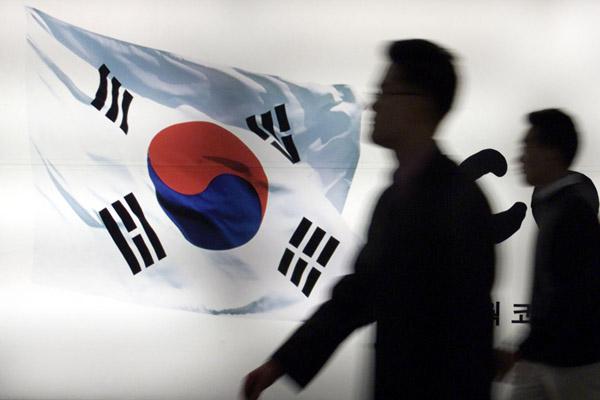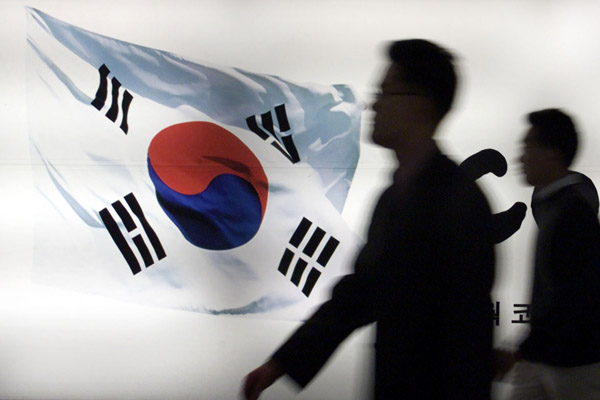
Korea Inc’s robust growth can largely be attributed to its major investment and deal-making prowess outside its mature domestic market. The Bank of Korea, the nation’s central bank, expects a fruitful 2014 for the export-driven country – it forecasts economic growth of 3.8 percent in 2014, up from 2.8 percent in 2013 this year and 2 percent in 2012. Southeast Asia is one region that is attracting a rapidly increasing amount of attention, boasting healthy economic growth rates, attractively low costs, and a burgeoning middle class.
Back to topGoing outbound
“Due to intense competition, a lot of Korean companies are having difficulties in finding new projects and revenue inside Korea, so their strategy is to go overseas,” says Eric Eunyong Yang, a partner and head of Yulchon’s Southeast Asia practice. Korean construction companies are targeting about 70 percent of their revenue from outside Korea, says Yang. Indeed, construction companies are facing a flat infrastructure and real estate market in Korea, so they need to look overseas, says Michael Chang, a senior foreign attorney at Shin & Kim who regularly advises Korean clients on their outbound investments. While areas like the Middle East, the U.S. and South America are often targets for Korean companies, Southeast Asia is drawing in significant construction, infrastructure, energy and finance related work, says Chang.
Kwon Lee, a managing partner at Lee International IP & Law Group, adds that pension funds and institutional investors too are increasingly making investments outside Korea. Meanwhile, several foreign asset management companies are increasing their capital raising activities in Korea to invest overseas, he says.
Nicholas Park, a senior foreign attorney and co-managing partner at Lee International IP & Law Group, says that more outbound investment is going into regions where there is significant economic growth. “Automobile manufacturers and consumer products such as pharmaceuticals and electronics are seeing significant growth in the CIS (Commonwealth of Independent States) countries, South America and Southeast Asia. This is largely because the more mature markets are having a harder time coming out of the recession, and Korean products are seen as more competitive than those from more mature markets like the U.S. or the EU,” says Park.
Back to topA swing towards Southeast Asia
Southeast Asia is becoming an area of particular interest for Korean companies. The region has become an important market for Korean companies in Asia, with significant activity in Vietnam, Indonesia and Myanmar, says Kevin Kim, a partner at Bae, Kim & Lee.
“Korean companies prefer to go to Southeast Asia because of its large population, cultural similarity and geographic proximity. Also, there is a big labour force, and there is a lot of potential and opportunities for development,” says Yang. “There are a lot of opportunities in the infrastructure field in terms of the need to build power plants, airports, roads and railways, to name a few.” According to the OECD’s Southeast Asian Economic Outlook 2013 report, Southeast Asia’s economic growth will return to a pre-crisis average of 5.5 percent over the next five years.
Historically, Korean companies turned to Southeast Asia for its attractively low manufacturing costs. But now, they also view the region as a lucrative market in which to sell their products. In January this year, South Korea’s Lotte Chilsung Beverage Co and Myanmar Golden Beverage Co established a joint venture to produce and distribute PepsiCo drinks in Myanmar. Lotte now has three business portfolios in Myanmar, including the beverage business, a hamburger franchise and investments in business hotels in Yangon.
In other notable deals in the region, the Laos government and a consortium of private-sector sponsors, comprising Korean companies SK Engineering & Construction Co and Korea Western Power Co, formed a $1.02 billion joint venture in February to develop a hydropower project in Laos. Shin & Kim acted as Korean counsel for the sponsors. And in capital markets, Lotte Shopping Co, Korea’s biggest shopping mall owner, obtained approval from the Singapore Stock Exchange in February to list a $1 billion real estate investment trust (REIT). The Lotte REIT would be the biggest IPO in Singapore since February 2013 when Mapletree Greater China Commercial Trust raised $1.3 billion through a REIT, Reuters reports.
Back to topA new market
Lawyers remain optimistic about Korea Inc’s outbound activity, with the number of outbound deals expected to pick up in 2014. The newest prospect for Korean investors in the Southeast Asian market is Myanmar, whose new civilian government is opening the country’s economy after five decades of rule by the military junta. With a land mass as large as Britain and France combined, Myanmar shares borders with 40 percent of the world's population in India, China, Bangladesh and Thailand. “Korean companies are going to markets where there is a real need. In Myanmar, you’ve got everything from infrastructure to energy, which are two areas that Korean companies feel they have a competitive advantage,” says Chang.
Official statistics show South Korean investment in Myanmar amounted to $2.98 billion in 77 projects as of March 2013. At the national level, the Korean government is helping Myanmar develop its infrastructure, starting with the construction of a friendship bridge across the Yangon River, to link the city of Yangon, Myanmar’s largest city, with the township of Dala. In return, an industrial zone is to be set up in Dala to usher in Korean investment. The two countries have also discussed eight areas of cooperation covering 39 projects, including those related to infrastructure development and services, according to Myanmar News. Korea will also provide $500 million in loans to Myanmar between 2013 and 2017.
At the corporate level, a Korean consortium led by Daewoo International launched a project valued at around $220 million in 2013 to develop luxury hotels in Yangon. Yulchon advised Daewoo International on the deal, which was one of the biggest projects from Korean investors in Myanmar last year, says Yang.
And in August last year, a consortium led by South Korea’s Incheon International Airport
Corp was selected as the preferred bidder to build a new international airport in Myanmar. Incheon Airport won the order worth about $1 billion for the Myanmar airport project as part of a consortium with Kumho Industrial Co, Halla Engineering & Construction Corp, Lotte Engineering & Construction Co and Posco ICT Co. The South Korean airport operator plans to finish constructing the Hanthawaddy International Airport near Yangon by 2018 and run the airport for up to 50 years, Reuters reports.
However, operating in Myanmar has its risks. The country is still reworking its legal system after passing new foreign direct investment laws last year. Legal reforms are rapidly changing the basic legal framework in Myanmar, and lawyers say that several Korean companies and investors are waiting to see the effect of the reforms before deciding whether to enter the market.
Back to topFollowing the clients
Some of Korea’s law firms too have followed their clients overseas to better service Korean companies on their investments abroad. Yulchon has two offices in Vietnam – Ho Chi Minh City and Hanoi – and has just been granted a licence to open an office in Yangon. The office will help the firm work more closely with clients and local law firms, and enable the development of projects and grow the firm’s reputation in Myanmar, says Yang.
Jipyong Jisung, a mid-size Korean law firm, has cast a wide net in Southeast Asia with offices in Ho Chi Minh City, Hanoi, Phnom Penh, Vientiane, Jakarta and Yangon. At the time of writing, Jipyong Jisung was not available for comment.
A lawyer from another Korean firm, who asked to remain anonymous, says his firm is considering the option of further expansion abroad. “Our clients have more business outside Korea, so we are thinking about the possibility of having offices in other cities outside Korea as well. Wherever Korean companies are active, we should be active in those jurisdictions too. To us, Southeast Asia is an important jurisdiction now,” he says.
Lee International’s Lee and Park, who marked the beginning of the year with a trip to Southeast Asia, note that there is a shift in the firm’s focus towards building more alliances with law firms and clients in the region. “Traditionally, there was not enough profitable work in those areas for us to deem them to be significant markets. But now that they are growing so quickly, it is important for us to work closely with local law firms there in order to gain a presence both for our firm and to assist our clients,” says Park.
While it does not have an office in Southeast Asia, Kim & Chang also indicated its outbound ambitions, opening its first office outside Seoul in Hong Kong in March 2013.
----------------------------------------------------------------------------------------------------------------------------------------------
Back to topFacing the challenges
While both Korean companies and law firms are greatly benefiting from their investments into Southeast Asia, the going isn’t always easy. Lawyers note that in some areas of Southeast Asia, the rule of law has not been established effectively, and several legal and regulatory hurdles often stand in the way. The biggest concern for clients is the uncertainty of government policy relating to foreign investment, says Yang. “In Thailand or Malaysia for example, where precedents have been set, foreign investors have a better idea of what to expect when making investments. But in a country like Myanmar, they are just starting to open up the market. Sometimes even the local lawyers cannot provide us with clarity in certain areas,” says Yang.
For his part, Kim from Bae, Kim & Lee says that some Korean companies operating in Southeast Asia worry about how to effectively enforce their rights. “The best option is to enter into an arbitration agreement. But even with an arbitration agreement, they still have concerns about whether an arbitral award will actually be enforced in the country. Companies have had this problem in countries like Myanmar and Vietnam,” says Kim.
Furthermore, there is also strong competition among law firms in Southeast Asia. Yang notes that in the Southeast Asian market there are international law firms, pure local law firms, and regional law firms that originated in one jurisdiction and then expanded into the rest of Southeast Asia, all vying for market share. In addition, his firm has to compete against the other major Korean law firms, as many of the big projects from major Korean clients are coming from their headquarters in Seoul.Despite fierce competition and legal uncertainty, Korean companies forge ahead with their outbound aspirations. “Aside from Myanmar, I believe Indonesia will be a hot market for investment this year. The rupiah devalued a lot last year, and the real estate market in particular is starting to pick up. Vietnam also had some difficulties for the last two or three years, but this year investment from Korea is likely to pick up,” says Yang. At the fore of this investment are Samsung and LG Electronics, which have announced that they will set up new factories in Vietnam, he says.
While both Korean companies and law firms are significantly upping their activity abroad, the legal landscape at home is heating up.
The signing of U.S. and EU Free-Trade Agreements in 2011 allows American and European law firms to open offices in Korea. So far, around 20 international law firms have set up shop in Seoul, operating as Foreign Legal Consultant Offices. Lawyers anticipate more to open this year.
A big change in the market in the past couple of years has been the lateral movement of lawyers between law firms, says Nicholas Park, a senior foreign attorney and co-managing partner at Lee International IP & Law Group. “Traditionally, Korea has followed a lifetime employment situation, where you start at a firm and end at the same firm. But over the past several years we have seen significant lateral movement, not only between Korean law firms, but also between Korean and foreign firms. For the time being, it is mainly among foreign lawyers at those firms,” says Park. As the Korean legal market continues to open up, Park believes that this trend will only increase, with foreign law firms looking to swoop up local talent. “This is also shown by the fact that so many more foreign headhunting companies have entered the market over the past several years in order to capitalise on those lateral movements,” says Park.
Korea has entered the second stage of market liberalisation, which allows foreign law firms and Korean law firms to collaborate in cases where domestic and foreign legal issues are mixed and share derived profits. In February, UK law firm Bird & Bird entered into a cooperation agreement with Korean firm Hwang Mok Park, marking the first tie-up between an international firm and one of Korea’s top 10 law firms. The agreement allows Bird & Bird to tap into Hwang Mok Park’s experience in Korea, and gives the Korean firm access to the UK firm’s wider global network.
Aside from the recently announced agreement between Bird & Bird and Hwang Mok Park, both foreign and local lawyers generally feel that the collaboration arrangement is unlikely to generate traction in the market. Several foreign lawyers note that complicated and strict requirements set out by the new regulation lessens the desirability of entering into a collaborative agreement.
For Korean lawyers, the proposition of a collaborative engagement does not seem economically practical. “We continue to maintain our independence and we are of the view that we have the core competencies for this market. We work with a number of foreign firms, several of which we have had relationships with for many years,” says Michael Chang, a senior foreign attorney at Shin & Kim. However, Chang says that the possibility of a collaboration arrangement cannot be completely ruled out. “If there is a compelling business case, there is no reason why we wouldn’t look at it. But these are still very early days and there is clearly no such case yet.”
While foreign firms are prohibited under the FTAs’ rules from hiring Korean attorneys and practising local law until July 2016, many are expected to become more active as the five-year restriction period draws to a close. Korean firms, however, remain upbeat about their market position, and are confident in the preparations they have made to handle a fully open legal market from 2016. “There will be more competition when foreign law firms are allowed to hire Korean lawyers and can do Korean work. Then there will be a bigger impact on the market,” says Kevin Kim, a partner at Bae, Kim & Lee. “We are preparing for that situation, and are always looking to be more competitive in maintaining our talent and providing better services to clients.”
“We really don’t know what is going to happen, says Kwon Lee, a managing partner at Lee International IP & Law Group. “If you look at what happened in Germany for example, once the market opened there the U.S. and UK firms dominated the market. But on the other hand, if you look at the opening up of Singapore’s legal market, there is still a very strong local law firm presence there … It will be interesting to see how the legal market will develop in Korea.”
Follow us on Twitter: @ALB_Magazine.
Back to top
 outside its mature domestic market. The Bank of Korea, the nation’s central bank, expects a fruitful 2014 for the export-driven country – it forecasts economic growth of 3.8 percent in 2014, up from 2.8 percent in 2013 this year and 2 percent in 2012. Southeast Asia is one region that is attracting a rapidly increasing amount of attention, boasting healthy economic growth rates, attractively low costs, and a burgeoning middle class.
outside its mature domestic market. The Bank of Korea, the nation’s central bank, expects a fruitful 2014 for the export-driven country – it forecasts economic growth of 3.8 percent in 2014, up from 2.8 percent in 2013 this year and 2 percent in 2012. Southeast Asia is one region that is attracting a rapidly increasing amount of attention, boasting healthy economic growth rates, attractively low costs, and a burgeoning middle class.

